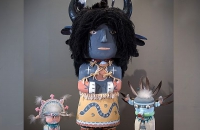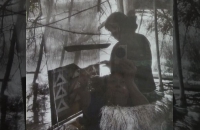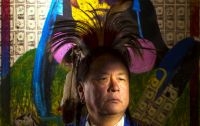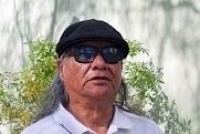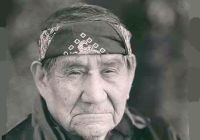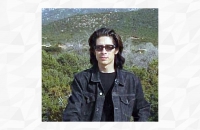
Navajo (Diné) Pottery Traditional Diné pottery is generally of a dark brown color with a distinct appearance that results from applying piñon pitch glaze follow firing. Except for this glaze, traditional Navajo pottery was largely undecorated until trading posts came into Navajo territory around the turn of the last century. In response to tourist preferences, Navajo potters gradually began decorating their pottery either with incised (carved) designs or with appliqué—sculptural motifs molded on the surface. Common appliqué designs included pine cones, oak leaves, ears of corn, yeibichai(spirit dancers), and animals.
Along with bowls, jars and pitchers, a dual-spouted “wedding vase” was, and still is, a popularly traded vessel. Additionally for the tourist market, artists also began making fired clay animal sculptures, such as sheep, bears, cows, goats, horses, squirrels and horny toads.
The traditional pottery-making process used by Diné women to make pottery continues today. The clay selected can be from one source or from several sources blended together. The clay is coiled, shaped, and placed in an outdoor pit directly upon fuels such as cedar wood, juniper wood or sheep dung. After firing, and before the pot has cooled, melted piñon pitch is applied as a glaze, both inside and out. This glazing not only gives the pot a distinctive appearance, but a distinct and pleasant aroma as well.



